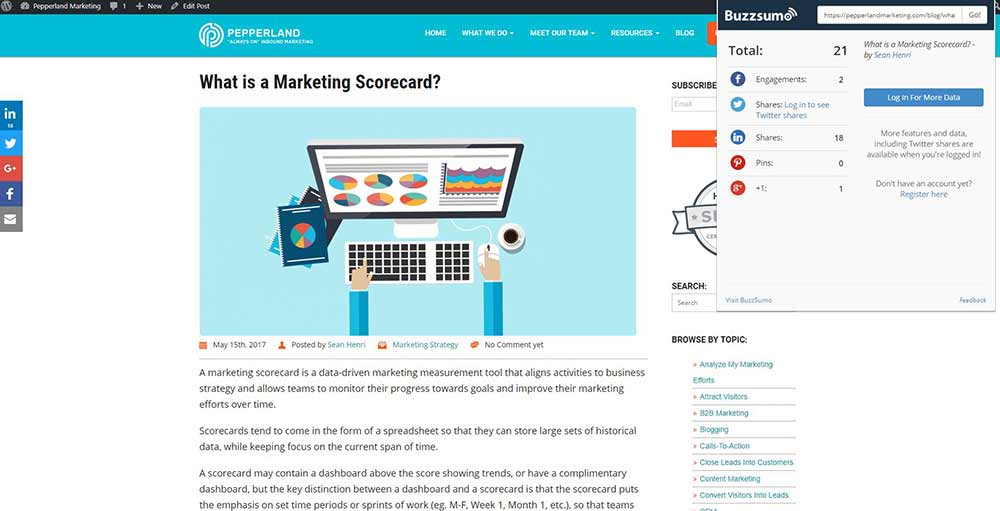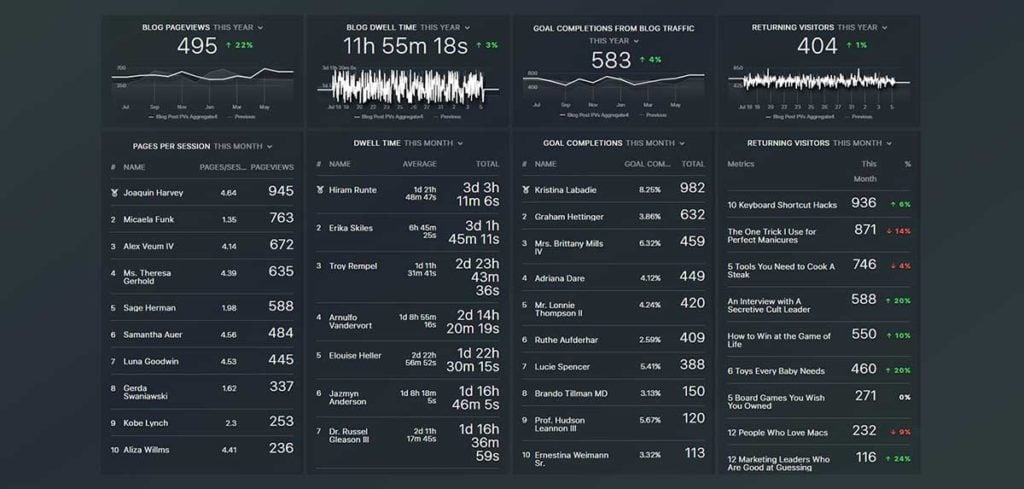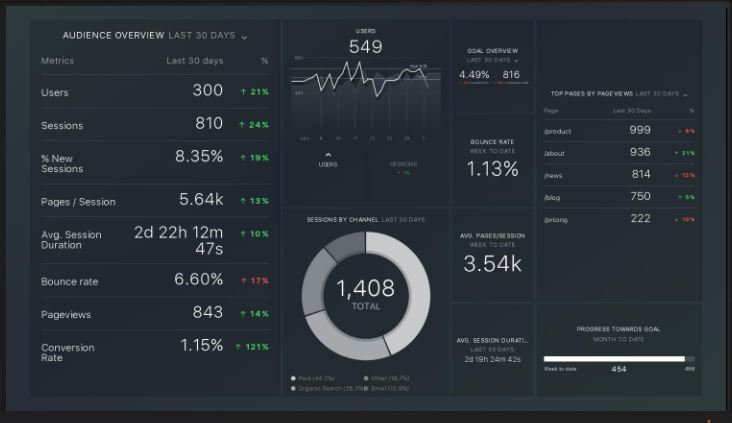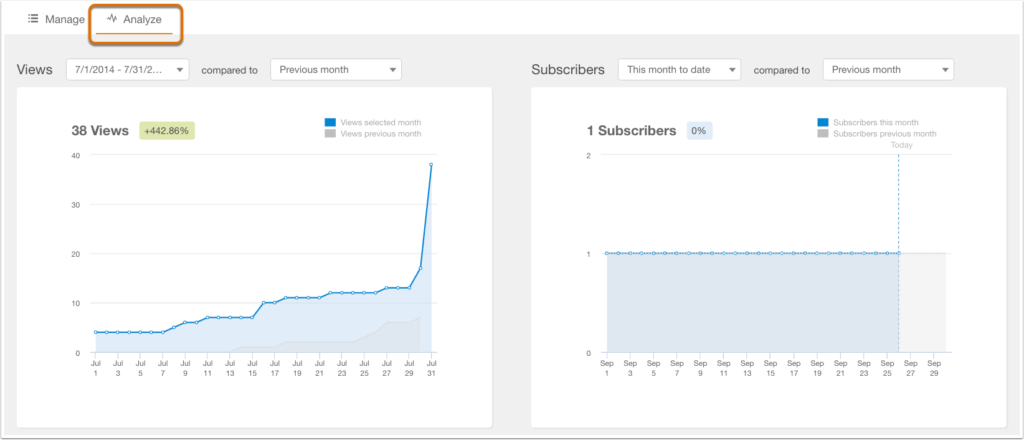Written By:
Tim Stobierski
Analytics often gets a bad rap. Even among inbound marketers, analysis is something that you either love or hate—there’s really no in-between. And though analytics is usually in the wheelhouse of an analytics guru who manages all things analytics for the team (Google Analytics, HubSpot, Google Ads, SEMRush, etc.), it is really a skill that everyone on a marketing team should have. And yes, that includes content marketers and content creators.
Now now, before you start to rebel, hear me out. Below are three really good reasons that content marketers need to get good at analytics.
1. It’s the only way to know how well your content is performing.
As a content marketer, one of the most important things for you to know is whether or not your content is resonating with your audience. If it is, then you’ll see that it is being shared on social media, earning backlinks, and ranking high in organic search. If it’s not, then it’ll languish in the deep web, to never be seen again.
Free Webinar: Inbound Marketing 101
If you aren’t tracking the performance of your content, then you’ll never know where you have space to improve. If a certain piece of content does really well, for example, you can try to replicate the content or format for other pieces to see if it does similarly well. Likewise, if a piece of content is shown to be doing poorly, you can either avoid the content or format in the future, or you can try to make adjustments to it to get it to rank better.
But again, if you aren’t tracking your performance, you’ll never know.
2. Knowing how to tie your content back to key performance metrics helps you demonstrate your value.
Do you know who is often the first team to get hit when it comes time to reduce budgets or scale back employees? Marketing. And do you know why? Because Marketing is notoriously bad at being able to tie their efforts back to company goals and key performance metrics.
By familiarizing yourself with analytics, you can learn to tie your marketing efforts back to the key metrics that demonstrate your value to company goals. By showing how your various blog posts, landing pages, CTAs, and lead flows led to an increase in revenue, you can safeguard your budget from slashes and make it less likely that you’ll find yourself without a job when business inevitably slows down.
3. Holding yourself accountable to benchmarks builds camaraderie with Sales.
This point is related to #2 above. Salespeople are used to being held accountable for their actions. They are given goals that they need to meet (in terms of calls, sales, and, ultimately, revenue) and their performance is analyzed based on how closely they hit these goals. If they come close, great; if they surpass them, then it’s time for a bonus; and if they fall short, they might need to update their resumes.
Compared to this process, Marketing is often seen as getting it easy. Just look at the featured image to this post. That guy has cookies. Marketers get to eat cookies, while Sales worries about quotas and sales targets.
Sure, marketers have goals in terms of visits and MQLs and the such, but these are often poorly correlated to actual revenue and business goals (again, see #2 above). And while this makes sense, it can breed some animosity between Sales and Marketing, because Sales begin to view Marketing as something that doesn’t actually offer hard value to a business.
By beginning to tie your performance back to key benchmarks that demonstrate the value of your efforts, you’ll also be able to point to these metrics when you are talking to Sales. This will have the effect of building camaraderie with the sales team, because they will see that, Oh, Marketing really is held accountable for their actions in the same way that we are. It’s always a great thing when Marketing and Sales are aligned instead of working against each other.
What Kinds of Tools Should I be Using?
First off, you should start by using any tools that your marketing team already has at its disposal. But once you’ve familiarized yourself with your internal reporting tools, here are some other great options that you can use to really drill into your performance to see what is working and what maybe needs to be adjusted.
BuzzSumo
Curious about how your content is performing out there in the wild? BuzzSumo gives you the insights that you need to see how well your content is resonating with your audience by analyzing how many social shares you’ve been receiving. The best part? Though it has a paid version, the free version is just as powerful, and it can be installed as an extension to Google Chrome.

Databox
Databox is an awesome service that allows marketers to create sleek, easy-to-understand, and easy-to-use dashboards to help with analytics. Because the software allows you to pull data from nearly 50 different sources (including HubSpot, Google Analytics, social media, MailChimp, and more), Databox makes it easier than ever for you to have all of your important data in one place, perfect for the content marketer who is trying to get better at analysis.

We’d recommend you try the Blog Quality Metrics template (shown above) to really dive into how well your blog content is performing.
Google Analytics and Databox
Want to bring your Google Analytics data together with your other Databox dashboards so that everything is in one place? Check out the Google Analytics KPI Dashboard template created by none other than Pepperland Marketing! Use it to learn more about your audience demographics, the URLs they are engaging with the most, the time of day they’re finding your content, what devices they’re viewing your content on, and more.

Of course, you could always just use your Google Analytics dashboard, but if you’re already working in Databox to view other data, this is an easy way to keep everything in one place.
Blog Dashboard in HubSpot
If you’re a HubSpot user, then you’ve already got access to a really powerful analytics tool: The reports function through your HubSpot Dashboard. In addition to showing you how many visits your blog has received, it will show you how many contacts you’ve gotten from visitors and how those contacts proceed into customers. You can also quickly see your landing page performance and data on your personas, which shows you who you’re attracting.

Want More?
Now that you’re all set on the analytics front, you’re going to need to step up your content creation game to make sure you are attracting the right audience to your website. Check out our list of free or cheap content marketing tools to get some inspiration as you create the best content on the web.








